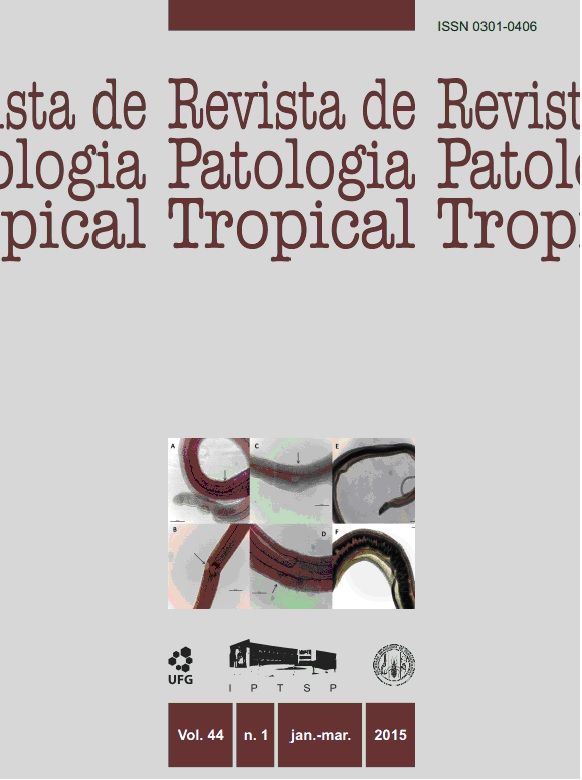ASPERGILLOSIS OF THE NOSE AND PARANASAL SINUSES: A REVIEW OF 54 CASES
DOI:
https://doi.org/10.5216/rpt.v44i1.34819Keywords:
Paranasal sinuses, Aspergillus, Mycology, Aspergillosis.Abstract
Aspergillus species are considered opportunistic fungi of increasing clinical importance. Informationregarding extrapulmonary involvement is scarce. The aim of this study was to isolate the differentspecies of Aspergillus from patients with rhinosinusitis. A retrospective study was conducted ina university hospital in Porto Alegre, Brazil (1986–2014). For mycological diagnoses, paranasaltissue obtained at surgery was subjected to histopathology examination and sent for fungal cultures.Of the 54 samples analyzed, 32 were diagnosed positive by culture. The underlying causes ofimmunodeficiency were: six with transplantation (three bone marrow,two lung, one kidney) andtwo with hematological disease (one bone marrow neoplasia and two leukemia). In the presentstudy, the clinical manifestations of rhinosinusitis aspergillosis were: 20 allergic reactions, 20fungus balls, and 14 acute invasive cases. The species isolated from the 54 samples were: Aspergillusfumigatus (n=14); A. flavus (n=6); A. niger (n=2); A. terreus (n=1); A. fischeri (n=1); and Aspergillussp., (n=3). Two concomitant species of Aspergillus were observed in two patients: A. fumigatus andA. flavus; and A. fumigatus and A. niger. In four patients, Aspergillus was associated with other fungi. These were: A. flavus and Fusarium, A. fumigatus and Rhyzopus, A. flavus and Mucorales,and Aspergillus sp. and Mucorales. The most common species of Aspergillus that were responsiblefor paranasal sinus infections were A. fumigatus, A. flavus, and A. niger.Downloads
Downloads
Published
How to Cite
Issue
Section
License
The manuscript submission must be accompanied by a letter signed by all authors stating the full name and email address, confirming that the material has not been published or is under consideration for publication elsewhere, and agreeing to transfer copyright in all media and formats for Journal of Tropical Pathology. The authors will not be paid for published articles. They are solely responsible for the content of those articles, even if the Editor holds the right to adjust them to the norms of the journal.
The reviewers will not be paid for the peer review process.

